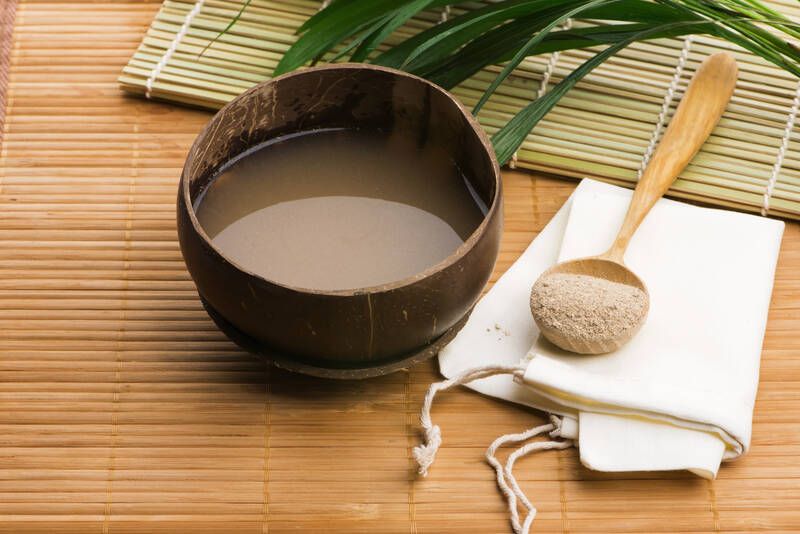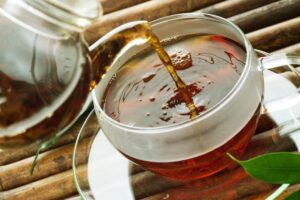

Have you been wondering what Kava tea is? And is it worth all the hype? If you are reading this article, there is a chance you've already made up your mind. The kava herb is extracted from Piper Methysticum, a plant native to the western Pacific islands.
While it might be recently budding in the USA, it has been consumed in the Pacific islands for centuries. The Kava tea is natively considered a celebratory beverage, drunk on happy occasions. But does one need an occasion to be happy?
With no clear guidelines regarding its safety from the FDA and its ever-growing popularity among the millennials, who now start their day with coffee but end it with kava tea, here’s all you need to know.
Does One Need To Learn How To Make Tea?
Have you been asking yourself this question lately? Well, you are not alone. Kava tea is no ordinary tea and requires a specific set of instructions to reach that perfect taste and aroma. Unlike other teas, you know for sure that nothing can go wrong; however, with Kava tea, a lot can go wrong. But you’ve got nothing to worry about, we’ve done all the homework for you.
Use A Kettle
If there’s one thing you need to borrow out of your grandma's kitchen, it has to be a kettle. It gets ten times easier brewing your Kava tea in a kettle. Before you begin, make sure your Kava roots are well ground and washed. Once that is done, add a teaspoon of Kava extract per the number of teacups you’re making and let it boil on medium heat for a good 20 minutes or until your kettle whistles.
The Staining Cloth Method
The thing with most herbal supplements is that they were discovered by natives living in forests and surviving only using their considerably impressive botanical knowledge. The correct way to make kava tea involves the important step of staining kava extract out of the roots, which can be done in the following methods:
- Using a normal kitchen strainer
- Get a staining cloth, boil the root and let your Kava roots stain through it.
- Kava tea bags are the best, time-saving, practical option.
Once stained properly, brew your tea in a minimum of 4 glasses of water. Avoid drinking concentrated Kava tea; it is considered unhealthy for the liver and can lead to hepatotoxicity.
The Soak Method
A shortcut to making kava tea is to clean your roots and soak them in water overnight. All the desirable nutrients tend to get absorbed in the water overnight. Boil the water the next morning and enjoy your Kava tea like none other.
Why Is My Kava Tea Too Bitter?
Are you sipping a bitter cup of Kava tea right now and wondering what went wrong? For starters, nothing to fret over. The word "kava" comes from the Polynesian word "awa," which means bitter. 
Not only will your Kawa tea be a little bitter, but it might also have a slightly muddy, pungent taste. After all, herbs are all about developing taste, and you might have to struggle a tad bit extra with Kava tea.
Avoid Reusing The Kava Root
We won’t recommend ordering Kava roots in bulk, but you should make sure you're ordering enough, not to have to reuse them. Although Kava roots release most of their chemical when given a second boil but not more than that.
Once the roots have been cleaned, ground, and boiled, it's time to throw them. There’s a chance you might be bailing the toxins out of the roots when you reuse them.
Start With As Little As Possible
Can’t seem to get around the taste of Kava tea? Before you give up, make sure you’re using as little quantity as possible. Unlike other organic plants, you don’t have to worry about the tolerance factor with Kava; in fact, it tends to develop reverse tolerance, meaning you might have to consume a quantity lesser than before to produce the desired results.
Don't Like The Taste Of Kava Tea?
Now, you might have mastered the art of making Kava tea, but you don’t seem to enjoy the taste? If that is the case, then it’s about time to start experimenting. Some users believe that adding a teaspoon or two of honey makes it bearable, while others use cinnamon and ginger to give it a pleasant aroma. All you have to do is figure out what works the best for you. Give your palate a testing experience, and try adding supplements to add more flavor.
How To Make Kava Tea More Filling?
Do you feel like you tend to get hungry after drinking your Kava tea? Most experienced users like a filling cup of kava tea. To do that, reduce the water quantity, and compensate it with another beverage. Coconut milk, almond milk, and low-fat skimmed milk are excellent options to make your kava tea in a milky medium.
You can also add a little fruity flavor and play with a little pineapple, apple, or grape juice in your Kava tea.
Will You Have To Brew Fresh Tea Every Time You Want Some?
Good news for the lazy bums who hate going to the kitchen again and again? Well, if it's your Kava tea that's making you take multiple rounds to the kitchen, we've got some good news for you. You can reuse your Kava tea for about 24 hours, so if you brew your tea first thing in the morning, add as many glasses of water as you plan on consuming the entire day and microwave the remaining whenever you feel like having them.
How To Truly Enjoy Kava Tea?
Don’t be unfair to yourself and force a bad-tasting tonic down your throat. See what works for your palate; try treating yourself, not punishing your poor taste buds. Add an extra herb or some basics like lemon or brown sugar. Make it tasty so that you look forward to consuming it.
The Ice Cube Hack; Everyone Needs To Know About
What if you’ve made more than enough tea, and you don’t know what to do with it? FREEZE IT!!!
Yup, you can do that. It works even best if the temperature is rising and summers aren’t your favorite part of the year. Just put some brewed Kava tea in the ice cube mould and let it set. Then whenever you feel like having some, add a few ice cubes to a glass of water, pinch in some mint, lemon, salt, and a little sugar. Have fun with your kava margarita!
Am I Doing Something Wrong?
Can you not help but stop wondering whether you’re doing something wrong? We don't blame you, some herbs are trickier than others, and you have to be a little tolerant. After all, patience bears the sweetest fruit.
Is It Okay If I Store My Kava Tea?
Are you planning on filling bottles of tea and refrigerating them? We’d suggest you reconsider your plans. Kava tea is otherwise slightly bitter, and it gets even more harsh if left over the counter or refrigerated. Chances are you might end up damaging your stomach, and in severe cases, even involve your liver.
Try brewing your tea every day; you can use it for up to 24-48 hrs at maximum. Tea stored beyond that time frame should be drained in the kitchen sink.
What's The Best Time To Enjoy Kava Tea?
If you're a true tea person, you'd say there's no time for tea because every time is tea time. However, morning seems to work best for most users with Kava tea, while others believe that a cup before going to bed is the most relaxing thing ever. Did that confuse you even more? Well, there’s only one way to reduce the confusion. Try out what works for you, and make sure you enjoy it too!



